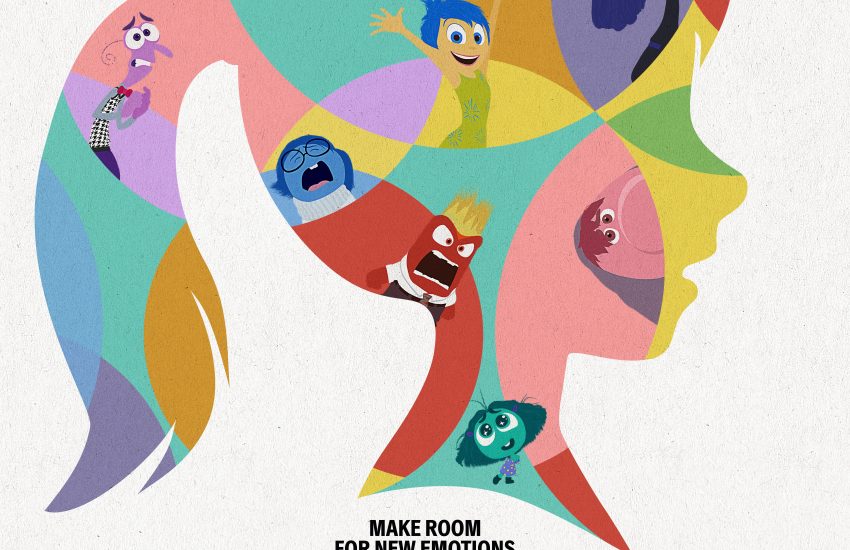Inside Out 2 In-Depth Review/Analysis: Portraying the Pubescent Mind Through Film
Warning: This post contains major spoilers!

“Again, it’s the creativity of Pixar at its best!”
Once again, I was amazed by the creativity of Disney·Pixar. The sequel to Inside Out, released 8 years later, Inside Out 2, cleverly portrays the pubescent mind in a way only the Inside Out franchise can. It skillfully utilizes the strengths of the cinema to make the invisible mind visible and audible.
In this post, I will provide an in-depth review of the movie Inside Out 2. I will focus particularly on two main points. First, I will examine how effectively this movie visually represents the complex emotions of puberty, which are often difficult to express in words. Second, I will analyze how the film explores its major themes: anxiety and self-integration. Stay tuned!
Movie Introduction
Inside Out 2 is an animated film produced by Pixar Animation Studios and distributed by Walt Disney Studios Motion Pictures, directed by Kelsey Mann, taking over from Pete Docter. Released on June 14, 2024, this movie spans genres of animation, family, comedy, and drama, with a runtime of approximately 1 hour and 36 minutes.
The main voice cast includes Amy Poehler as Joy, with Maya Hawke joining as the new emotion, Anxiety. Kensington Tallman voices Riley Anderson, and returning cast members Phyllis Smith, Lewis Black, Tony Hale, and Liza Lapira reprise their roles as the voices of Riley’s emotions.
While the original Inside Out focused on the story of 11-year-old Riley adjusting to a move from Minnesota to San Francisco, the sequel Inside Out 2 explores 13-year-old Riley’s turbulent journey through puberty. The film introduces five new emotions: Anxiety, Envy, Embarrassment, Boredom, and Nostalgia. Through the conflicts and resolutions between the original and new emotions, the movie delves into the changes in Riley’s mind during her adolescent years.
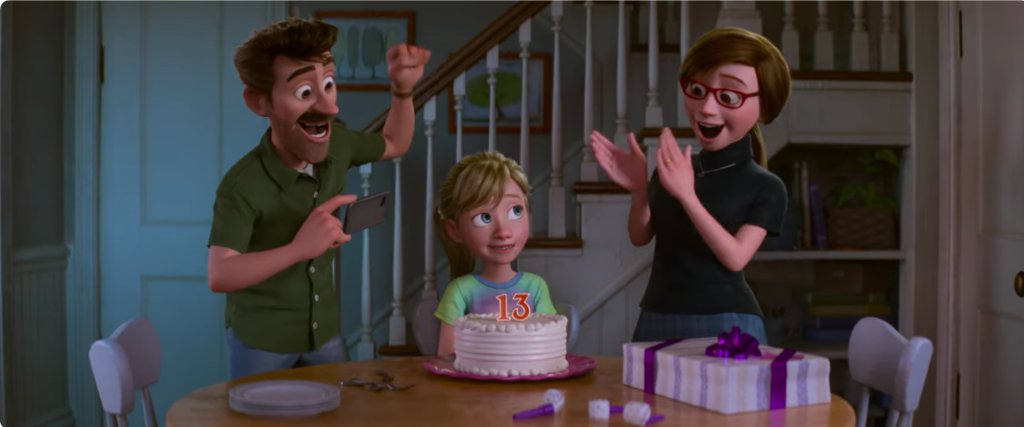
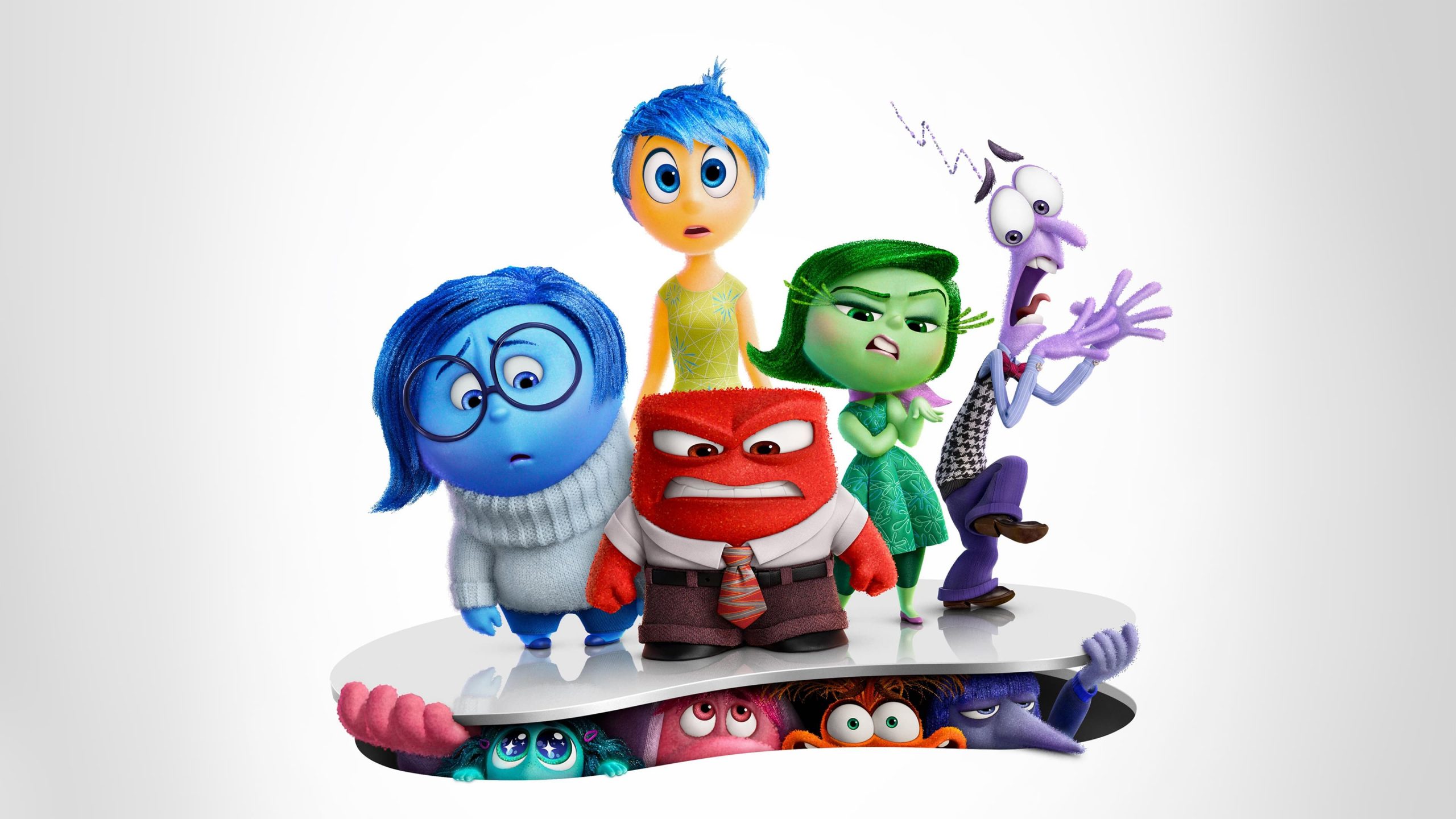
The Complex Emotions of Puberty Expressed in the Inside Out Way
Pubescent emotions are not only invisible but also difficult to articulate. However, Inside Out 2 captures the essence of these emotions in a way that only the Inside Out franchise can.
The metaphors used are incredibly fun and engaging. In the previous film, Riley’s mind expands and stabilizes after several events. However, as she enters puberty, her mind falls back into chaos. The movie depicts this turmoil as an “expansion project” of the mind’s headquarters. The scene where construction workers arrive and start demolishing parts of the headquarters brilliantly conveys the feeling of pubescent confusion to the audience.
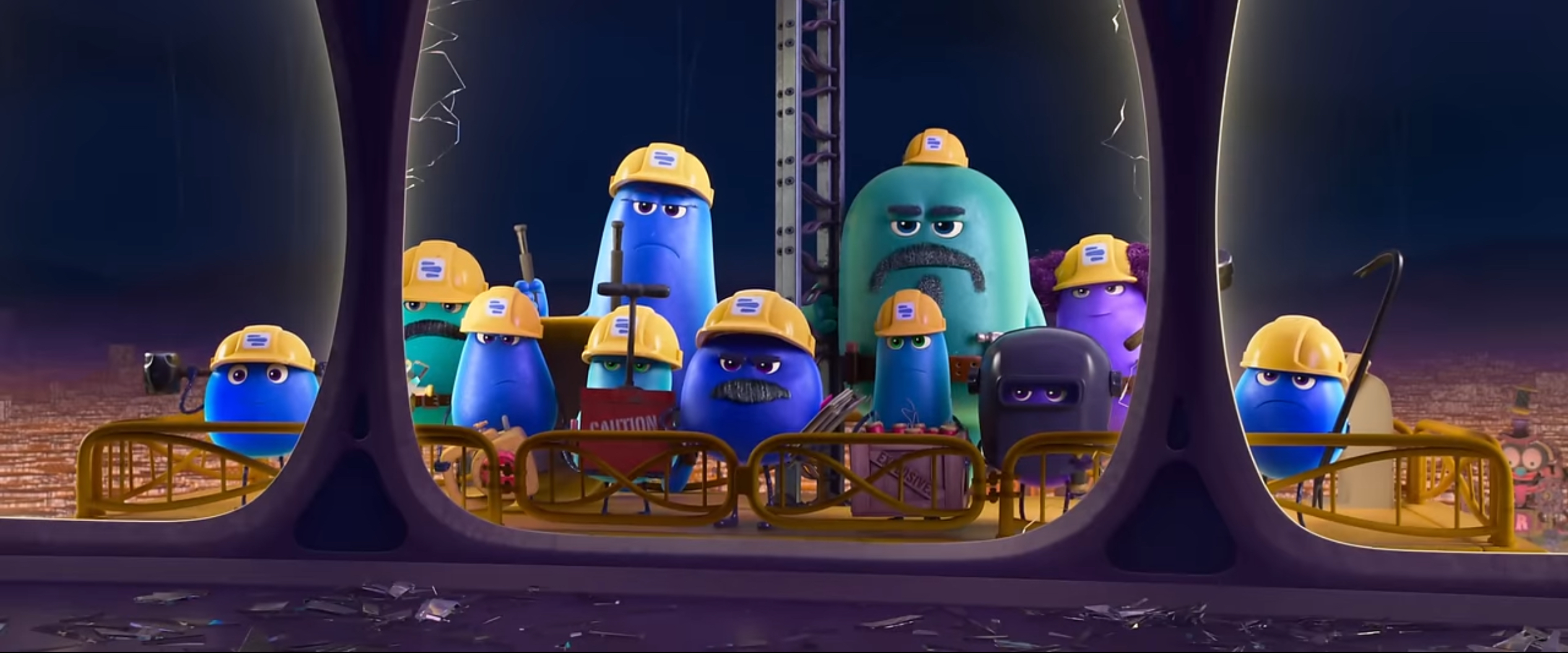
As Riley grows, her mind becomes more complex, and this increased complexity is depicted through the introduction of new emotions. As the expansion project nears completion, Anxiety and other new emotions make their appearance. Anxiety, characterized by its large red eyes, creates a sense of tension and hints at upcoming conflicts among the emotion characters.
The design of the Anxiety character is particularly intriguing. With red skin, large eyes, and small pupils, it gives off a somewhat sinister vibe. However, its voice and smiling mouth convey a more naive and kind impression. The character’s large, uneven teeth and spiky hair further express a sense of anxiety. This combination of traits effectively encapsulates the multifaceted nature of the emotion, demonstrating a brilliant character design that embodies anxiety.
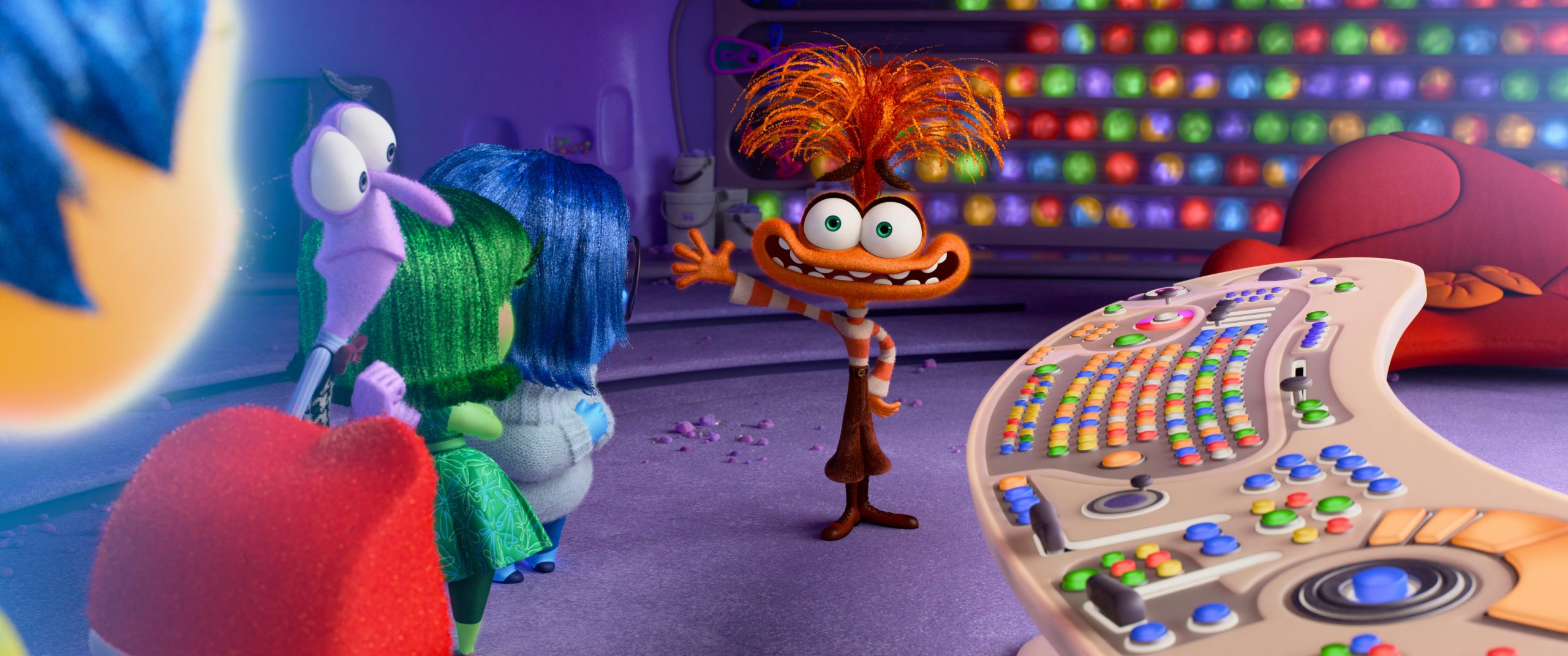
While the film uses new characters to portray Riley’s internal changes, her external challenges are depicted through a hockey camp. Attending the hockey camp represents a significant external change for Riley. She is invited, along with her best friends, to a three-day camp that gathers the nation’s top hockey prospects. Excelling at this camp could lead to joining a great team, the “Firehawks.”
Riley’s relationships also become more complex and challenging. On the way to the camp, Riley learns that her two best friends have been assigned to different high schools. Through Riley’s thoughts, the movie illustrates how sensitive she is to her friendships during puberty and how she strives to protect herself from getting hurt.
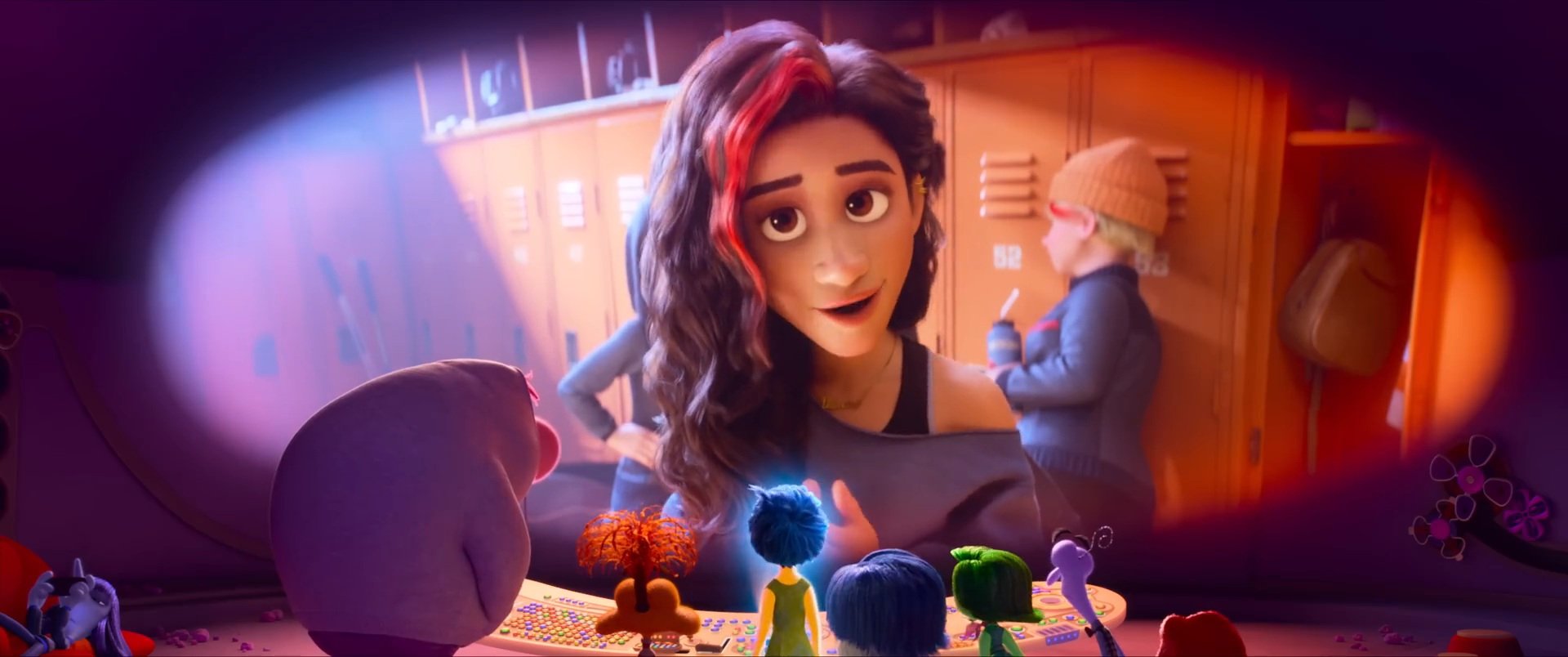
Amidst the chaos, Riley goes through various trials and errors. In an effort to impress Val and new people, she ends up deceiving herself. The movie portrays this as Anxiety throwing Riley’s existing “sense of self” to the back of her mind. This illustrates how Riley temporarily suppresses her self-awareness and beliefs (like “I am a good person” and “I am a good friend”) due to the anxiety stemming from her relationships, in a way that is uniquely Inside Out.
The hockey camp effectively represents the adolescent challenges Riley needs to overcome. According to psychoanalytic developmental theory:
“Adolescents, facing internal psychological changes and significant adult tasks, become concerned with how they are perceived by others. They are also interested in connecting previously acquired skills and roles to adolescent career models” 1.
The hockey camp, which doubles as a tryout for the “Firehawks,” provides Riley with an opportunity to explore her passion for hockey as a potential career path. Additionally, the various relationships she navigates at this camp force her to reflect on how she is perceived by others.
The Villain-But-Not-a-Villain ‘Anxiety’ and the Various Faces of Anxiety
The central character, Anxiety, is multi-dimensional and complex. The intricacies of anxiety are mirrored in the various incidents triggered by Anxiety in the movie, prompting the audience to contemplate the different facets of anxiety.
As Riley faces challenging tasks, Anxiety naturally takes the lead in the control center of her mind. The unfamiliar camp environment, the pressure to succeed as a hockey player, relationships with close friends, and interactions with new people all contribute to making Riley more anxious. The film cleverly portrays Riley’s growing anxiety by showing Anxiety taking more control over the console.
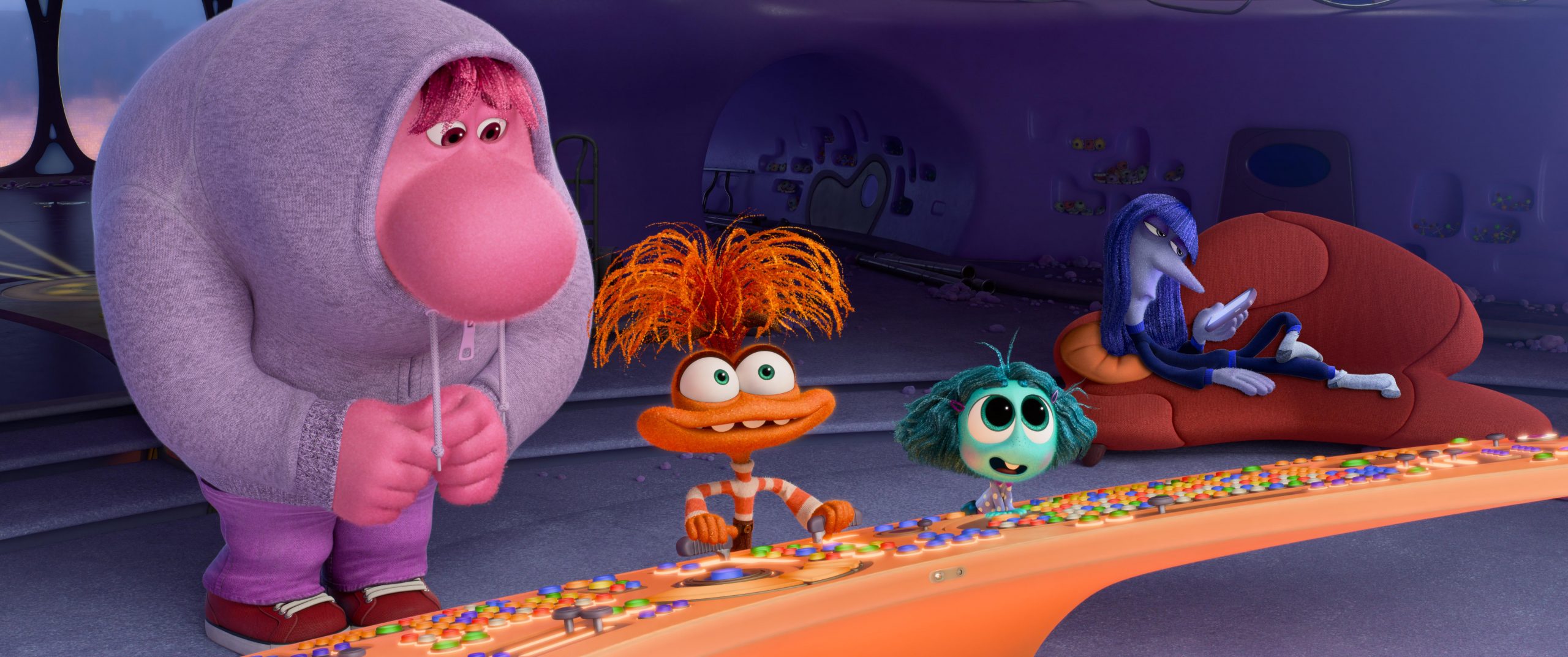
Ironically, the more Anxiety tries to control things for Riley, the more chaotic the mind’s headquarters becomes. In reality, when we become overly anxious and compulsive, things don’t necessarily get better. Anxiety imprisons the emotions in a glass jar, rendering them immobile. This brilliantly depicts how extreme anxiety can paralyze other emotions, in a manner true to the unique style of Inside Out.
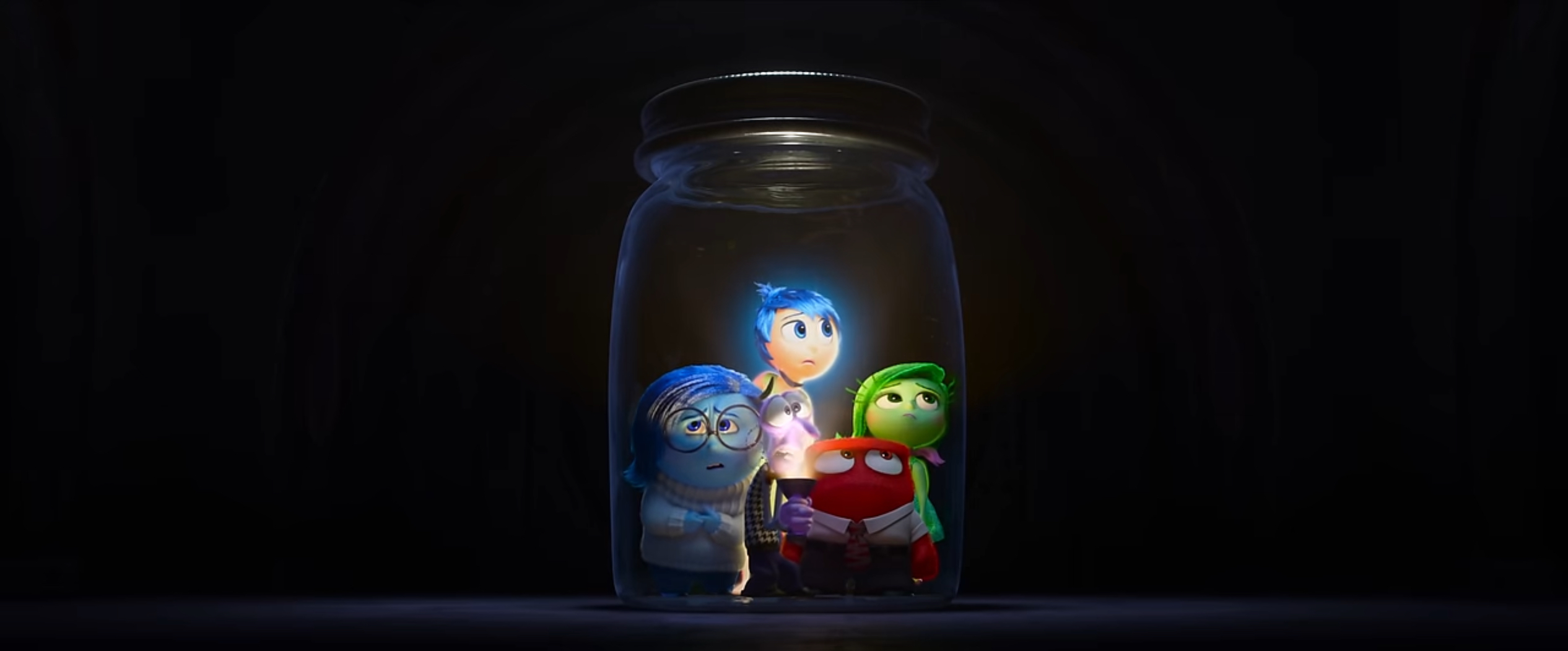
One of the film’s highlights in depicting anxiety is the pillow fort infiltration scene. The movie captures the essence of anxiety in a single scene very well. This scene truly showcases the ways movies can uniquely tell stories.
Midway through the film, Joy and the other emotions infiltrate the Pillow Fort. The fort is depicted as resembling the command center of the villain, Anxiety. Like a dictator, Anxiety commands the workers through a large screen, ordering them to “simulate every possible bad situation that could happen to Riley.” After Joy shouts, “Put down the pencils and stop imagining the worst,” the workers stop and happily engage in a pillow fight.
The first message of this scene is about the necessity of anxiety. The scene’s mise-en-scène makes it look like a villain plotting a scheme. The large, red screen and Anxiety controlling the workers from the center give off the unmistakable appearance of a villain. However, the actual work being done inside is for Riley. This shift in perspective makes the audience reconsider Anxiety’s role. The film conveys the message that “even anxiety, which seems purely negative, is an emotion that aims to help us,” in a distinctly cinematic way.
The second message is the drawback of excessive anxiety. The original purpose of the Pillow Fort workers is to engage in pillow fights, but under Anxiety’s control, they are forced to do work they dislike. Moreover, due to this anxiety, Riley cannot fall asleep. Only when Joy intervenes do the Pillow Fort workers return to their original task, and Riley can sleep. This scene, emphasizing the harmony between anxiety and other emotions, serves as a small foreshadowing of the film’s overall theme.
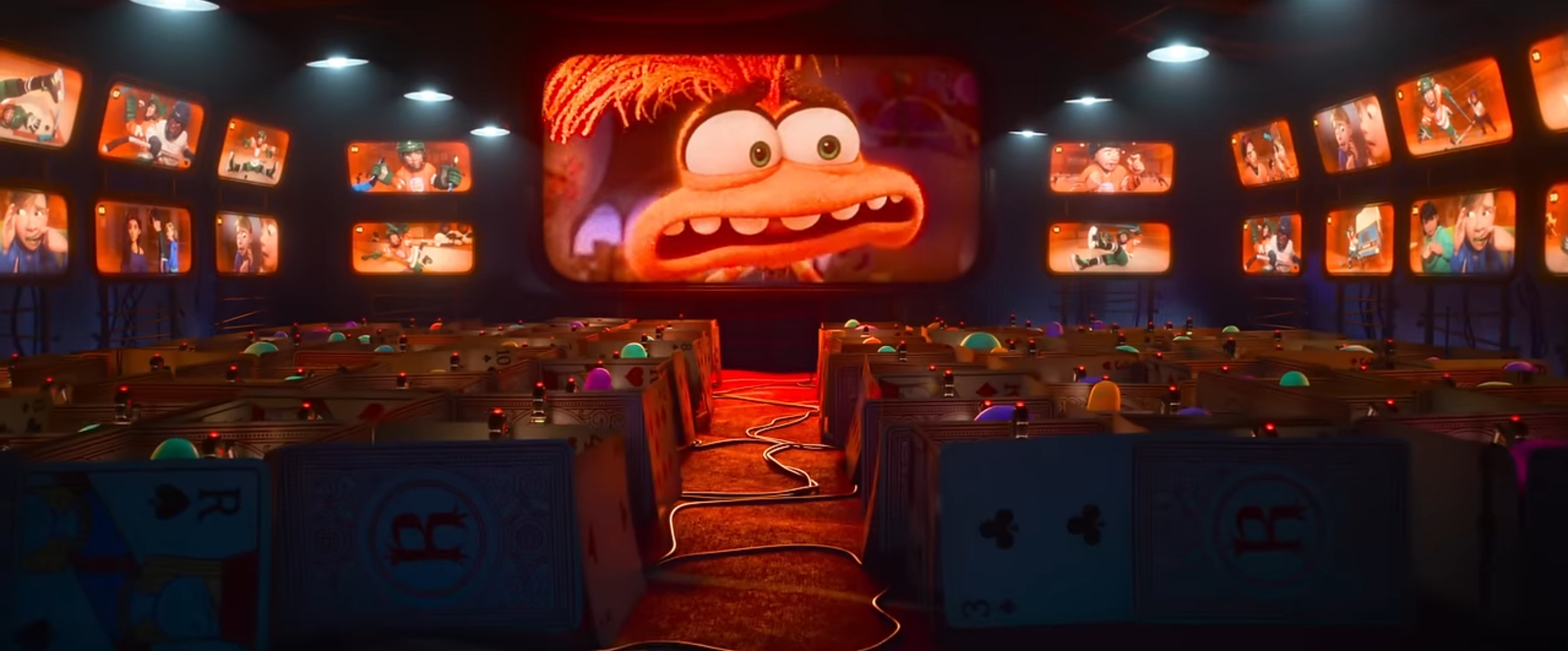
From “Good Self” to “Complex Self”: Integration and Growth of Emotions
As the tension around Riley intensifies, Anxiety works harder. It takes more control of the mind’s headquarters, pushing Riley to her limits. It throws away her positive self-image and creates a new sense of self that says, “I’m not enough,” “If I excel at hockey, I’ll make friends,” and “If I join the Firehawks, I won’t be alone.”
The existing sense of self and the new one created by Anxiety are starkly contrasting. The former paints a positive and kind image of oneself, while the latter is filled with feelings of inadequacy and fear of abandonment. The movie visually and audibly represents these conflicting emotions. The contrasting senses of self are depicted through the colors blue and red, and what Riley feels from the senses of self is expressed through the dialogues constantly uttered by these senses of self.
Anxiety itself is trying hard to make things better, but the situation only gets worse, leading to frustration. This frustration is depicted as an “anxiety storm” surrounding Anxiety and the console. The storm grows more intense, culminating in Riley being benched for 2 minutes during a crucial hockey tryout. As tension peaks, Anxiety reaches its breaking point and bursts into tears. Joy persuades the distraught Anxiety to escape together.
At this moment, Joy realizes that the negative memories she had suppressed and discarded are necessary to Riley. This realization leads to the creation of a new, integrated sense of self, combining the previously conflicting senses of self.
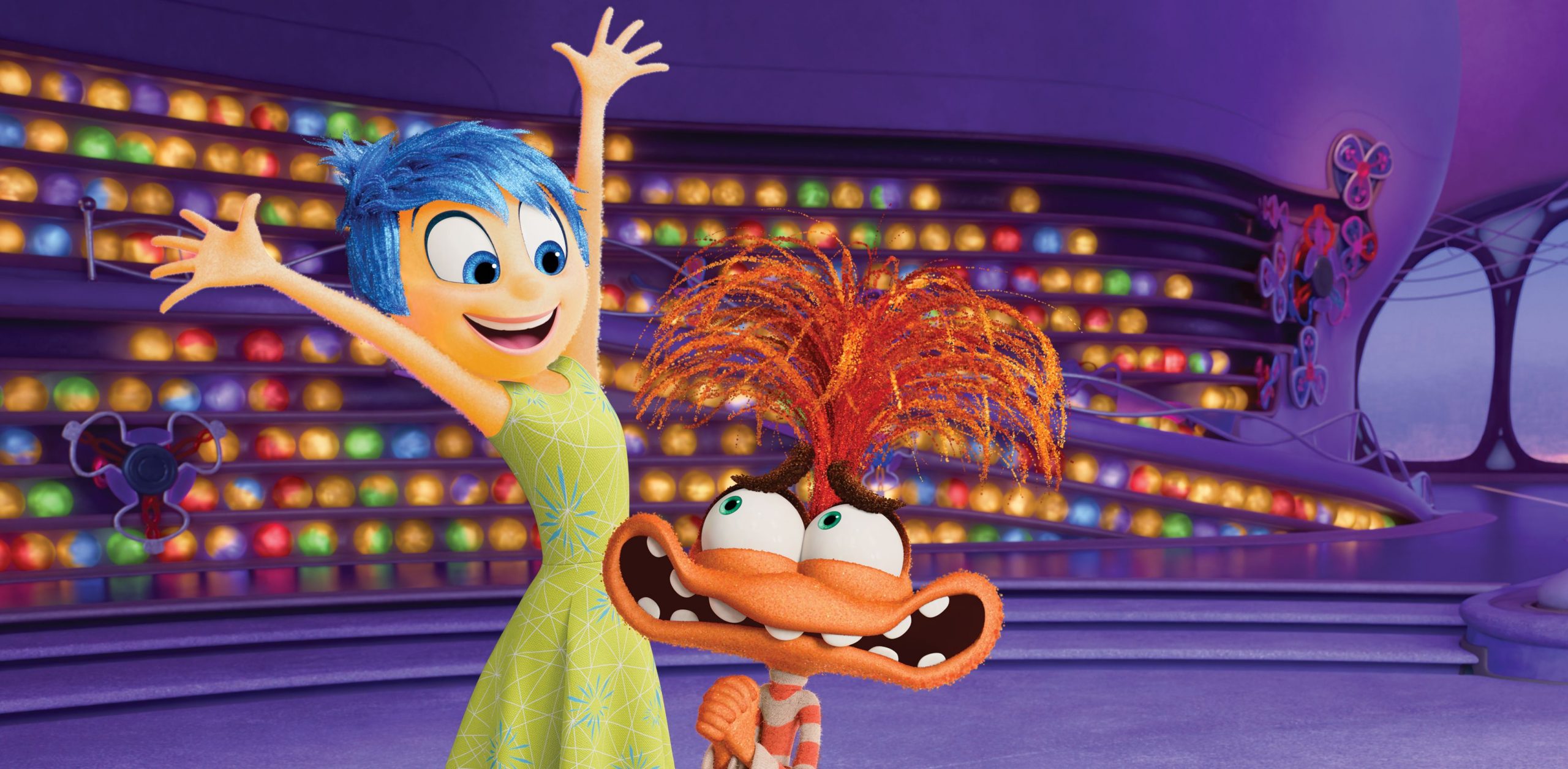
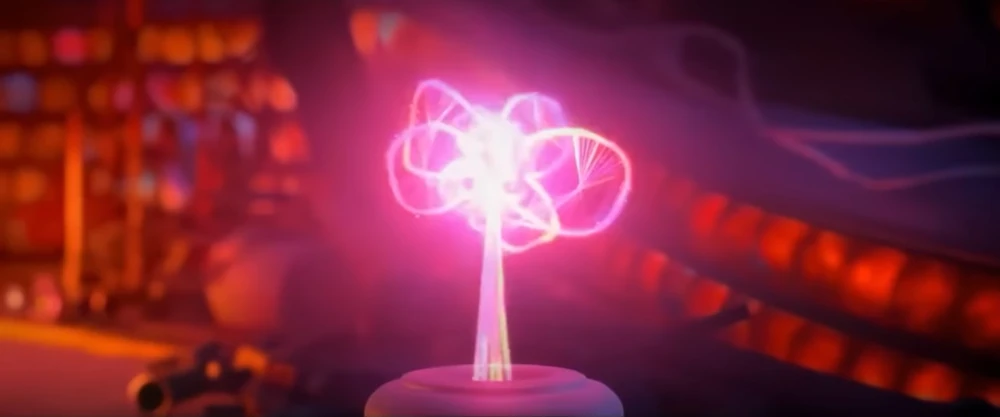
I consider this scene the most outstanding moment of the film. The movie beautifully uses 3D graphics to depict the chaos and integration caused by conflicting senses of self. The newly integrated sense of self subtly coexists with both blue and red hues. Through the words spoken by this new sense of self, the audience understands that Riley has embraced both her positive and negative aspects. I was in awe, thinking, “How did they come up with such a brilliant way to portray the integration of the sense of self and inner growth?”
The integrated new sense of self says the following 2:
“I am selfish.” “I am kind.” “I am inadequate.” “I am a good person.” “I want to fit in, but I also want to be myself.” “I am brave, yet I am afraid.” “Success is everything.” “I make mistakes.” “I am mischievous.” “I am a good friend.” “I am the worst friend.” “I am strong.” “Sometimes I need help.”
The newly formed sense of self includes a conscience. Consequently, Riley confesses her mistakes to her friends and asks for forgiveness. Through the scenes of Joy once again controlling the mind console and Riley genuinely enjoying playing hockey, the movie depicts the true joy a teenager can experience after overcoming the challenges of puberty.
The film’s open ending also effectively illustrates Riley’s matured mindset. The movie concludes with Riley’s enigmatic smile, leaving the result of her acceptance unknown. Interestingly, the audience can sense that Riley, even if she faces rejection, has the strength to overcome it. Life can be unfortunate at times, but a well-established sense of self can help us overcome these misfortunes.
The Harmony of Joy and Anxiety
The overarching theme of Inside Out 2 remains consistent with its predecessor, Inside Out. It emphasizes that all our emotions exist for our benefit, and no emotion is inherently bad or unnecessary. Just as Sadness was in the first film, Anxiety in this film is also a vital emotion. The key message is the importance of harmony and balance among our emotions.
Inside Out 2 is likely to resonate deeply with adults as well. Many adults often push themselves harshly, saying, “I’m not enough.” This mirrors the scenario where Anxiety takes control of the mind’s console. For adults who might not have fully navigated their pubescent years, this film could offer a great deal of comfort and reassurance.
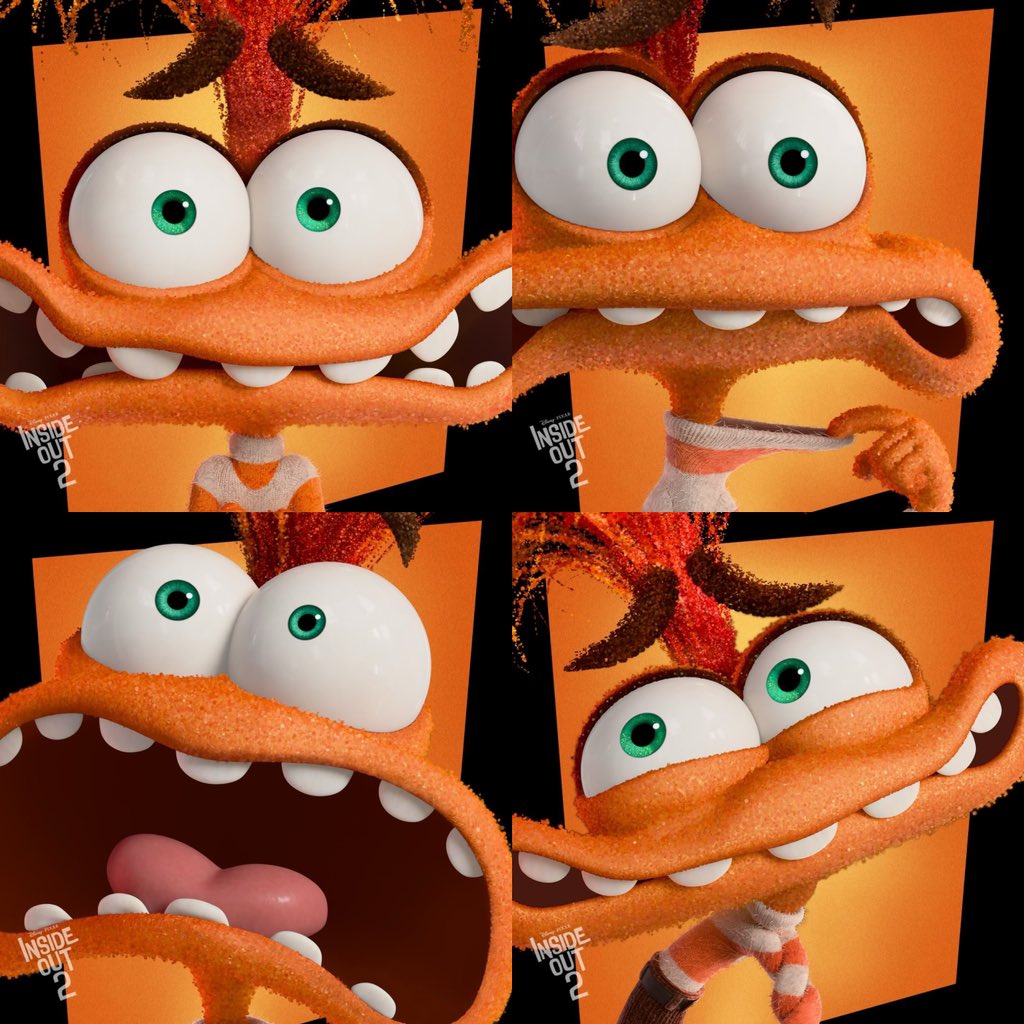
Limitations
There were, however, some limitations.
The most significant limitation is the lack of focus on the sexual aspect, which is a major part of pubescent development. The film seems to have handled the sexual aspects very minimally, only hinting at Riley’s admiration for Val.
The storyline is also very limited in terms of events and time. The three-day ice hockey camp seems too short to effectively represent the actual duration and complexity of pubescent growth. Despite being a feature-length sequel released after eight years, it feels somewhat like a short film. It seems the filmmakers had to compromise by condensing the experience of puberty into a 100-minute movie.
Conclusion: The Adolescent Mind and Growth Expressed in True Inside Out Style
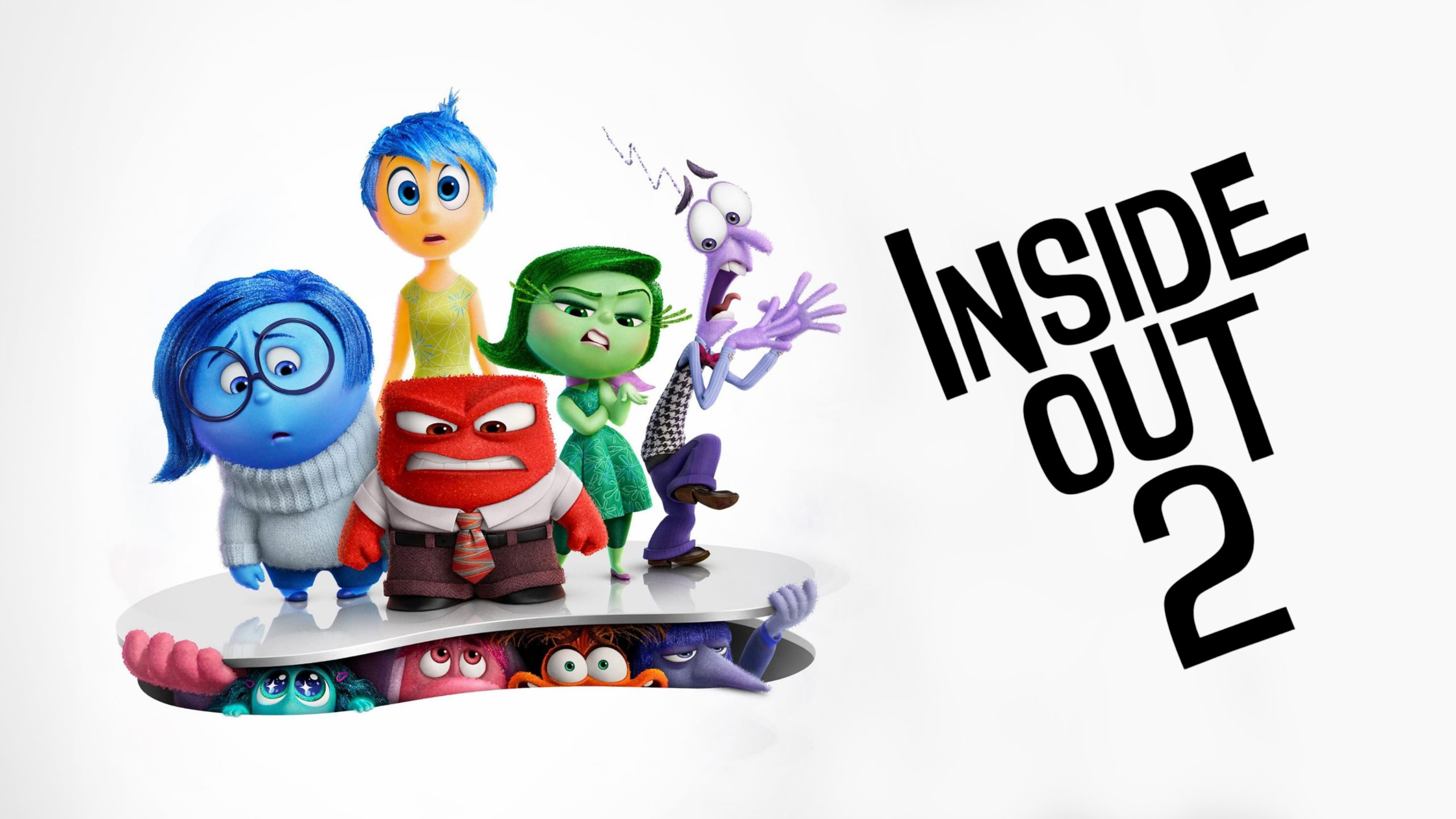
Inside Out 2 masterfully captures the chaos and growth of pubescent Riley in a way that only Inside Out franchise can. Through its visual elements and the personified emotions’ narratives, the film effectively conveys the complex mind of a teenager without relying on complicated dialogues.
It’s a movie I highly recommend for both children and adults who struggle with the belief that “mistakes are unacceptable” and “one must always be a good person.”
On a side note, it would be wonderful if Pixar explored stories that highlight the inner worlds of people who are hurt and marginalized through the expansive universe of Inside Out. A sequel or short film focusing on individuals from troubled backgrounds, shedding light on their inner feelings and emotions, and showing the experiences and processes through which they find healing and happiness, would be a deeply meaningful addition.

